This tour features giant pandas. There is no one who does not love giant pandas, the cutest creature in the world. As we all know, China is the homeland of giant pandas. Then, where are the most pandas in China? Undoubtedly, it is Chengdu. And Chengdu Research Base of Giant Panda Breeding is the best place to see pandas in Chengdu. If you also are a panda lover, and want to have a giant panda tour to China, then Beijing, Chengdu and Shanghai is the best China tour package for you to choose. Because this package includes the best China places to visit, it won’t let you down. Besides seeing giant pandas, you will also see the palaces and tombs of ancient emperors, as well as the world-famous Great Wall. Get in China from Beijing and out from Shanghai is the most accessible way to travel to China. And we have the best China travel guides, who will take you to explore authentic vivid China. Don't hesitate any longer, contact us right now.

Today, you will land in Beijing. After your arrival at Beijing airport, your guide and driver will be already there and waiting for you. Then you will go to the hotel and check in.
Free time suggestion: Go to Houhai Lake and experience the young people’s life in Beijing. Find a small bar, have a drink while listening to Chinese pop music. Almost every bar in Houhai has a band to perform every night.
Today your China tour begins.
After buffet breakfast at the hotel, your guide will meet you at the hotel lobby. You will visit Tian’anmen Square, the Forbidden City(closed each Monday), and Summer Palace.
Tian’anmen Square is located in the city center of Beijing, which is the largest city center square in the world. Around Tian’anmen Square, there are the Great Hall of the People, Chairman Mao Memorial Hall, National Museum, and Monument to the People's Heroes. Walking forward, you will see the Tian’anmen Gate Tower at the north end of Tian’anmen Square. There has always been a portrait of Mao Zedong on the Tian'anmen Gate Tower, which is replaced once a year. The painting of a new portrait usually starts in August. And the new one will be finished before October, and being hung up on October 1st, the National Day. The portrait is 6 meters long, 4.6 meters wide, and weighs 1.5 tons, which is the largest hand-drawn portrait in the country, Asia and even in the Eastern Hemisphere.
After the visit to Tian’amen Square, we will walk to the Forbidden City. It is famous for being an imperial palace for 24 emperors in Ming and Qing Dynasties. The construction of the Forbidden City finished in 1420. It covers an area of 720,000 Square meters, which is the size of about 10 White Houses. Do you know which emperor built the Forbidden City? It was Ming Chengzu Emperor, Zhu Di. Before he became emperor, he was a feudal king in Beijing. (The capital was Nanjing city then.) His throne was snatched from his nephew, Zhu Yunwen, the second emperor of the Ming Dynasty. After Zhu Di ascended to the throne, the whereabouts of Zhu Yunwen was unknown, which made Zhu Di upset, and he always felt that Zhu Yunwen was still alive. So he listened to the minister's advice and decided to build the imperial city in Beijing and move the capital to Beijing. Then the Forbidden City came into being.
After lunch, we will continue to explore Beijing. Then you will visit the Temple of Heaven. It was a place for emperors to worship the god of heaven in the Ming and Qing Dynasties. The buildings were destroyed by Eight-Nation Alliance in 1900. After the founding of New China in 1949, the government invested a lot of money in protecting and repairing the cultural relics and monuments of the Temple of Heaven. Now, people can appreciate the cultural relics here as well as have an exercise. You may meet enthusiastic locals during your stroll in the park, who could teach you Tai Chi. In addition to Tai Chi, you will see various Chinese traditional exercises here.
Then we will go to visit the Summer Palace. Do you know how much money the Summer Palace cost when it was built? The Qing Yi Yuan (the former name of the Summer Palace) was completed in 1764, costing about 4.8 million taels of silver(a tael equals to about 37.3gram, and 4.8 million taels equal to about 2.3 billion CNY now). After the predecessor of the Summer Palace, the Qing Yi Yuan was destroyed by fire in 1860 by the British and French forces, it was never fully restored later. During the stroll in the Summer Palace, you will have a look at the Long Corridor. It is 728 meters long, and the longest promenade corridor in Chinese gardens. The Long Corridor was recognized as the longest promenade corridor in the world and listed in the Guinness Book of World Records in 1992. There are more than 14,000 pictures, with each beam is painted on the corridor.
At last of the day, you will be transferred back to the hotel.
Options:
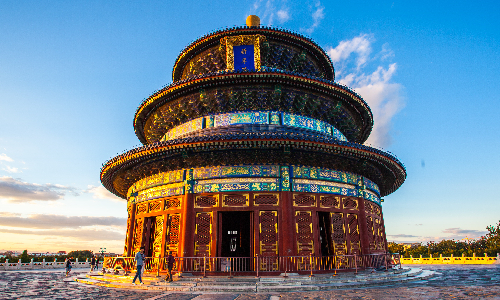
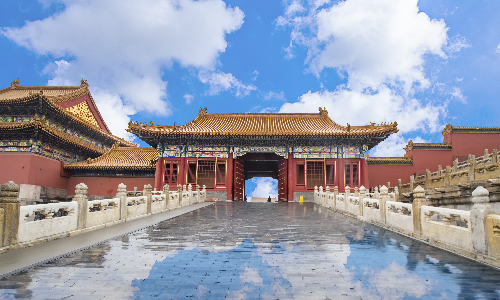
This morning, your guide will wait for you at the hotel lobby.
Today, after driving for about 1 hour (50KM), you will first have a visit to Sacred Way, which is the leading part of the mausoleum buildings of Chang Tomb, with a total length of about 7.3 kilometers. The construction of the Sacred Way began in the first year of Emperor Zhengtong of the Ming Dynasty(1436) and was completed in the 19th year of the Emperor Jiajing of the Ming Dynasty (1540). Now, except for the bridge and culvert buildings, which are in ruins, other tomb ritual facilities are well preserved. There is a gate, Dragon and Phoenix Gate, on the Sacred Way. In ancient China, the dragon was the symbol of the emperor and the phoenix was the symbol of the empress. When the emperors and the empresses are buried in the tomb, their coffins must pass through this gate, so it is called the Dragon and Phoenix Gate.
The Ming Tombs are one of the largest surviving imperial tomb complexes in China and the world, with the largest number of tombs for emperors and empresses. The Ming Tombs covers an area of more than 120 square kilometers and takes 230 years to build. A total of thirteen emperors, twenty-three empresses, two crown princes, more than thirty concubines, and two eunuchs were buried here. Our visit today is to the Chang Tomb, the tomb of Emperor Chengzu of Ming Dynasty and his empress. Chang Tomb is the first tomb among Ming Tombs, covering an area of about 120,000 square meters.
Then you will go to see the majestic Great Wall. You must have heard much about how grand the Great Wall is, but never seen with your own eyes. Finally, you have a chance to climb it today. There are many sections of the Great Wall, the section we take you to visit is Mutianyu Great Wall, where there are much fewer tourists. To save energy for your following excursion, you will take a cable car to reach the top of the Great Wall. You can explore further on the wall by yourself. Travel back in time when you standing on the Great Wall. You can imagine how hard it is to build such a grand building with bare hands. You could descend by cable car or toboggan. If you ask me, I will recommend toboggan, which is more exciting. Michelle LaVaughn Obama, the former American president’s wife, had experienced it and loved it very much.
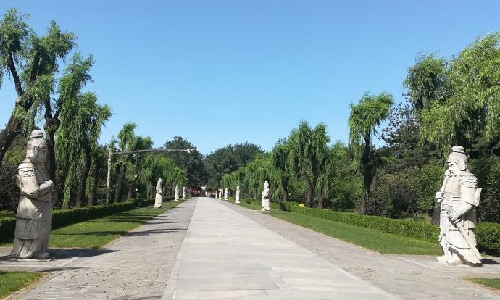
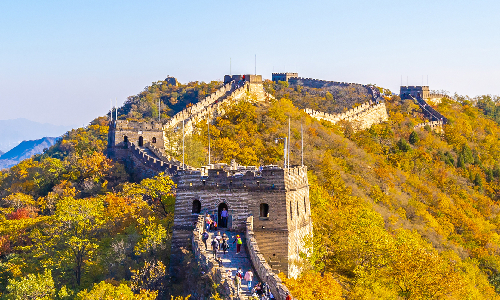
 Chengdu
Chengdu Today, you will say goodbye to Beijing, and start your Chengdu tour. You will take the estimated flight CZ3903 14:55/18:00 to Chengdu.
Tips: Chengdu City is the capital of Sichuan Province, in which the people love spicy food most. If you go to a restaurant to have dinner by yourself, make sure the waiter knows if you want your dishes spicy or not, otherwise your dish may be very spicy.
After breakfast at the hotel, your guide and driver will be ready to take you to start your Chengdu exploration. Today you will visit Chengdu Research Base of Giant Panda Breeding, Wuhou Shrine Museum, and Jinli Street.
Giant pandas are the most adorable creatures on the planet. The giant panda is one of the world's oldest and most endangered surviving species, known as a living fossil. Come to Chengdu Research Base of Giant Panda Breeding, where you will see the most giant pandas. If you travel to China between August and December, you may have a chance to see cute baby giant pandas. Based on the six sick and hungry pandas from a rescue in the 1980s, the Chengdu Research Base of Giant Panda Breeding has now bred 143 litters and 214 cubs of giant pandas, with 152 surviving (as of 2015) relied on technological innovation, without capturing a single giant panda from the wild. Now there is the largest captive breeding population of giant pandas in the world.
The Wuhou Shrine Museum, covering an area of 150,000 square meters, was built in the first year of Emperor Zhangwu (221) in Shu Han Period. It is a special shrine to commemorate Zhuge Liang, and also known as Kongming Temple, Zhuge Temple, and Prime Minister Temple. It is a place for people to affirm and praise the spirit of Zhuge Liang, the prime minister of the Shu Han Period, who "died with all his might". It is also the best place to admire the Romance of Three Kingdoms. There is a place here called the Maolu, or Caolu. It was where Liu Bei, the first Emperor in Shu Han Period, visiting Zhuge Liang many times to invite him to assist with the wars.
Then you will go to Jinli Street. Jinli Street is part of the Wuhou Shrine Museum, covering an area of more than 30,000 square meters. Legend has it that Jinli was once one of the oldest and most commercial streets in the history of Western Sichuan, famous throughout the country as early as the Qin and Han Dynasties and the Three Kingdoms period. In 2005, Jinli was selected as one of the "Top Ten City Commercial Pedestrian Street" in China. It is on a par with other famous markets such as Wangfujing Street in Beijing, Jianghan Road in Wuhan, Jiefangbei Road in Chongqing and Heping Road in Tianjin, and is known as the "First Street in Western Sichuan". Here you can buy chopsticks, tea, lanterns as souvenirs. You may see craftsmen kneading clay figures, making sugar paintings and cutting paper on the roadside. You also have the opportunity to taste local traditional snacks.
Option:
If you are an opera fan, you could watch the Sichuan opera in Shufeng Yayun. Sichuan opera has a long history and has preserved a number of excellent traditional repertoire, and a rich repertoire of music and exquisite performing arts. It is national folklore that is enjoyed by the people of several provinces in southwest China, including Sichuan, Yunnan, and Guizhou. The showtime is 18:00-19:30 and 20:00-21:30.
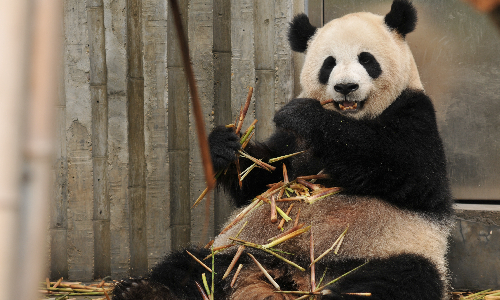
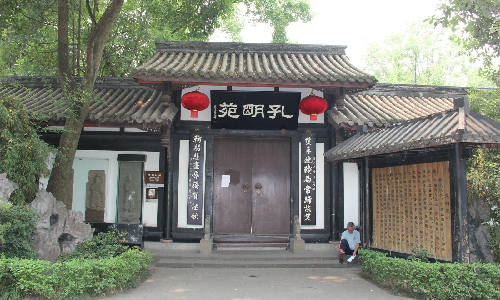
Today you will drive for about 2 hours (140 kilometers) to visit Leshan Giant Buddha. Leshan Giant Buddha is also known as Lingyun Giant Buddha. The buddha is a seated statue, 71 meters in height, and is one of the largest cliff stone statues in China. The Leshan Buddha was carved in the first year of the Tang Dynasty (713) and completed in the nineteenth year of Emperor Zhenyuan (803), spending about ninety years. Leshan Buddha is a Maitreya Buddha, which was highly respected and worshiped in the Tang Dynasty. Buddhist scriptures say that when Maitreya is born, there will be "peace in the world". Legend has that the Leshan Buddha statue was built because there were lots of accidents on the river. To bless the passing ships, a Buddhist master named Haitong suggested building a Buddha statue here. Later, the imperial court also gave strong support.
Then your guide will take you to visit Huanglongxi Town, which has a history of more than 2100 years. The original town was on the east bank of the Fu River, and it was destroyed in a fire in the late Ming Dynasty. After there were three families, He, Qiao, and Tang moved to the current site to build houses, and gradually developed into today's Huanglongxi Town. Travel back in time to the ancient times when you walking in the town. You may see the 800-year-old banyan trees. There are 6 banyan trees older than 800 in the town. If the time is enough, I will also recommend you to taste a local snack, Huang La Ding. It is one of the most famous snacks in Huanglongxi. The ingredient of Huang La Ding is the local freshwater fishes, which is tender and has no fishy taste.
Then you will back downtown and have free time at Kuan Zhai Xiang Zi, an area full of old alleys in Chengdu. In 1718, after the Qing Dynasty armies pacified the Quanggol Rebellion, more than a thousand soldiers were chosen to garrison Chengdu and build the Shaocheng city. The Kuan Zhai Xiang Zi is a remnant of that time. There are three main alleys, Kuan Alley, Zhai Alley, and Jing Alley. Kuan Alley is the place to enjoy the old-style Chengdu by visiting the ancient buildings in the Qing Dynasty. Zhai Alley is the place to exhibit the courtyard culture of Chengdu, with distinctive bars and restaurants in the courtyards. Jing Alley becomes a photo wall on one side and a market on the other side.
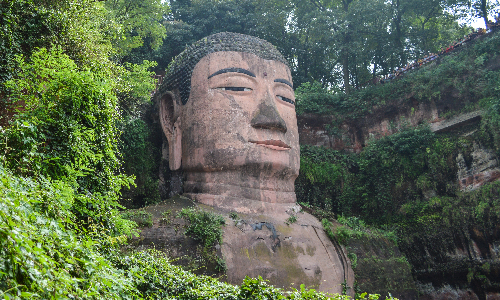
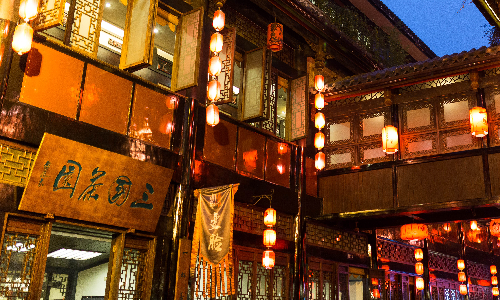
 Shanghai
Shanghai Today you will have a visit to Wenshu Monastery. Located in the Qingyang District of Chengdu, Wenshu Monastery was built during the Sui Dynasty, Emperor Daye Period (605-617). It is one of the four major Buddha temples along the Yangtze River in China. After the founding of New China, the monastery was repaired many times. And then thousands of ginkgo, camphor, plum, magnolia, and other flowers and trees are planted here. Now it has become a very popular place for Buddhist services, sightseeing.
And then, if time allows, you will have a tea time at Heming Teahouse. Chengdu people like to get together and drink Ba Ba tea(Chengdu people call the large open-air venue Ba Ba). Drinking Ba Ba tea is to drink tea in the open air in a large venue. And the Heming Teahouse is the representative of the Ba Ba Teahouse. Heming Teahouse is located in Chengdu People's Park.
After the sightseeing, you will take the estimated train CA4501 16:45/19:30 to Shanghai. On your arrival in Shanghai, your Shanghai local guide will wait for you at the Shanghai airport arrival hall. Then your guide and driver will escort you to the hotel, and assisting you with check-in.
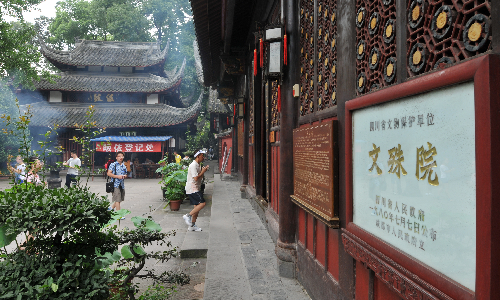
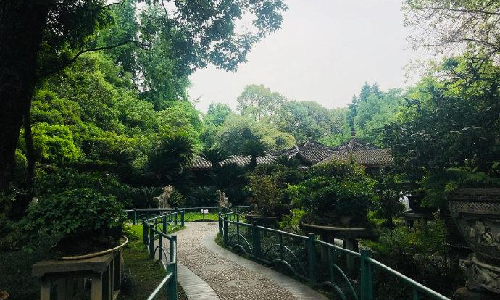
Today, you will first visit Yu Garden. Yu Garden (closed each Monday) was opened to the public in 1961 and was listed by the State Council as a national key cultural relic protection unit in 1982. Yu Garden has a long history of holding various kinds of flower shows, as well as amusement activities such as the Chongyang Festival's ascent to a high place and the Lantern Festival, etc. Moreover, President Xi Jinping once received the French President Macron and his wife Brigitte.
Then you will go to the Bund. On the east side of the Bund are the vast Huangpu River and the beautiful new embankment of the Bund, where visitors can enjoy the elegance of the Huangpu River, the mother river of Shanghai. The new look of the Pudong Lujiazui financial area is on the other side. Most of the buildings are built in the 19th and early 20th Centuries. Instead of just walking around on the Bund, your guide will take you to have an in-depth visit to a historical building on the Bund. Besides, more than 50% of fine restaurants are located nearby area, and if you want to have a nice dinner by yourself, then come to the Bund.
Later, you will walk to Nanjing Road. Nanjing Road is a famous historical and commercial street. The special attractions on Nanjing Road include the Yong’an Department Store, which opened in Nanjing Road in the seventh year of the Republic of China (1918). The Xianshi Department Building, which started construction in the third year of the Republic of China (1914) and officially opened in October of the sixth year of the Republic of China (1917), is also a nice place to have a visit. Besides, you can also try some local snacks here, such as drunken food, fresh meat moon cakes, steamed dumplings.
Then you will go to Shanghai Tower. Shanghai Tower is the highest building in China. You will ascend to the 118th-floor observation hall, which is 546 meters high, overlooking the whole view of Shanghai. The elevators here are the fastest ones in the world. It takes only 55 seconds from the second-level basement to the 118th floor.
Optional activities:
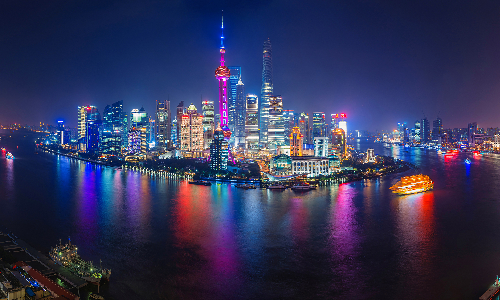
Today, you will drive for about 70 minutes (45 kilometers) to explore one of the ancient water towns of Shanghai, Zhujiajiao Water Town. Zhujiajiao Water Town is known as the Venice of Shanghai, Hollywood of Shanghai suburbs. The golden waterway, Caogang River, crosses through the town. The water and land transportation of the town is convenient. In 1991, it was listed as one of the four famous historical and cultural towns in Shanghai. In addition to its rich culture, it is also rich in aquatic products, including perch, freshwater hairy crab, river shrimp, snapper and silverfish. You may have a chance to try some of them at a local restaurant.
Then you will go to visit the Jade Buddha Temple. The Jade Buddha Temple is famous for the two jade Buddha statues worshiped in the temple. The two jade Buddha statues are sitting one and reclining one respectively. They are brought from Burma by Master Huigen in 1882. The main buildings here include the Great Buddha’s Hall and Jade Buddha Building and the sitting Buddha is worshipped in the Jade Buddha Building. There are a lot of believers on the 1st and 15th days of every lunar month to come here to pray, especially in the morning. It is believed that Buddha will hear what the first person prays, and make it come true.
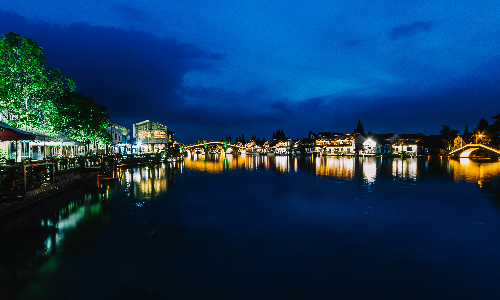
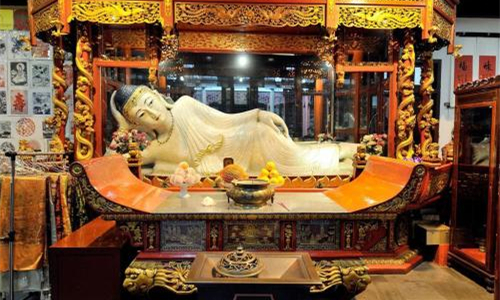
After breakfast, you will be transferred to the airport according to the schedule of your return flight. Your guide will help you with your luggage and check-in at Shanghai airport.
Editor: Summer Hou
| City | Five Star hotel list | Four Star hotel list |
|---|---|---|
| Beijing | Sunworld Dynasty Hotel Beijing Wangfujing | Sunworld Hotel Wangfujing |
| Chengdu | Sofitel Chengdu Taihe | Holiday Inn Express Chengdu Jinniu |
| Shanghai | Ocean Hotel Shanghai | Courtyard by Marriott Shanghai Central |
 |
![]() About your child or infant, please contact us for a discounted price.
About your child or infant, please contact us for a discounted price.



We started with a few days in Beijing & ended in Shanghai, from where we visited the Forbidden City and Great Wall. In between we visited Terra Cotta Warriors Museum, Panda Base, Shanghai Disneyland.

We had a wonderful holiday in China which will remain long in the memory. China is a breathtakingly beautiful country full of splendid temples and palaces, mountains and rivers, peaceful rural scenes and bustling shopping streets.
 QUICK ENQUIRY
QUICK ENQUIRY